Cavitation Phenomenon Around a Triangular Obstacle
$140.00 $70.00 Student Discount
- The study investigates cavitation in water flow around a triangular obstacle using ANSYS Fluent CFD simulation.
- The geometry is created in ANSYS Design Modeler, with a mesh of 310,000 structured elements generated using ANSYS Meshing.
- The simulation employs a pressure-based transient solver with the k-epsilon turbulence model and Volume of Fluid (VOF) multiphase model.
- ANSYS Fluent conducts a time-dependent analysis with enabled cavitation in mass transfer mechanisms to simulate phase change from liquid water to vapor.
To Order Your Project or benefit from a CFD consultation, contact our experts via email (info@mr-cfd.com), online support tab, or WhatsApp at +44 7443 197273.
There are some Free Products to check our service quality.
If you want the training video in another language instead of English, ask it via info@mr-cfd.com after you buy the product.
Description
Cavitation Phenomenon in Water Flow Around a Triangular Obstacle
Introduction
This study investigates the cavitation phenomenon in water flow around a triangular obstacle using Computational Fluid Dynamics (CFD) simulation. Cavitation is a critical process in fluid dynamics where rapid changes in pressure cause the formation of vapor bubbles in a liquid. Understanding this phenomenon is crucial for various engineering applications, including hydraulic systems, propellers, and pumps. The simulation aims to visualize and analyze the cavitation process, flow patterns, and pressure distribution around the triangular obstacle.
The simulation was conducted using ANSYS Fluent, a powerful CFD software package. The geometry of a triangular obstacle in a water flow field was created using ANSYS Design Modeler. The computational domain was then discretized using ANSYS Meshing, resulting in 310,000 structured elements providing a balance between computational efficiency and solution accuracy.
Methodology
The simulation setup included a pressure-based solver in a transient state, allowing for a time-dependent analysis of the flow.
For turbulence modeling, the k-epsilon model with standard wall function was selected, providing a robust approach for capturing the complex flow patterns around the obstacle.
The Volume of Fluid (VOF) multiphase model captured the interaction between water and vapor phases.
Cavitation was enabled in the mass transfer mechanisms to simulate the phase change from liquid water to water vapor.
Results and Discussion
The mesh visualization demonstrates a well-structured grid, with refinement near the triangle to capture the complex flow features accurately.
The simulation results provide valuable insights into the cavitation process and flow behavior around the triangular obstacle. The mass transfer rate contour shows significant activity behind the triangle, indicating the region where cavitation occurs. Positive values represent vaporization, while negative values indicate condensation.
The static pressure contour reveals a low-pressure region immediately behind the triangle, which is consistent with the cavitation zone. This pressure gradient around the obstacle drives the flow separation and subsequent cavitation. The turbulent intensity plot shows increased turbulence in the wake region behind the triangle, which is expected due to flow separation and vortex formation.
The velocity magnitude contour illustrates flow acceleration around the triangle’s edges and a low-velocity region in its wake, corresponding to the cavitation zone. The water volume fraction plot clearly shows the cavitation region, where the fraction of liquid water decreases, indicating the presence of water vapor.
The pathlines and vector plots reveal the flow separation and recirculation behind the triangle, which contribute to the cavitation process.
In conclusion, the CFD simulation successfully captured the cavitation phenomenon in water flow around a triangular obstacle. The results demonstrate the formation of a low-pressure region behind the triangle, leading to the vaporization of water and the creation of a two-phase flow. The study highlights the complex interplay between pressure distribution, velocity fields, and turbulence in driving the cavitation process.
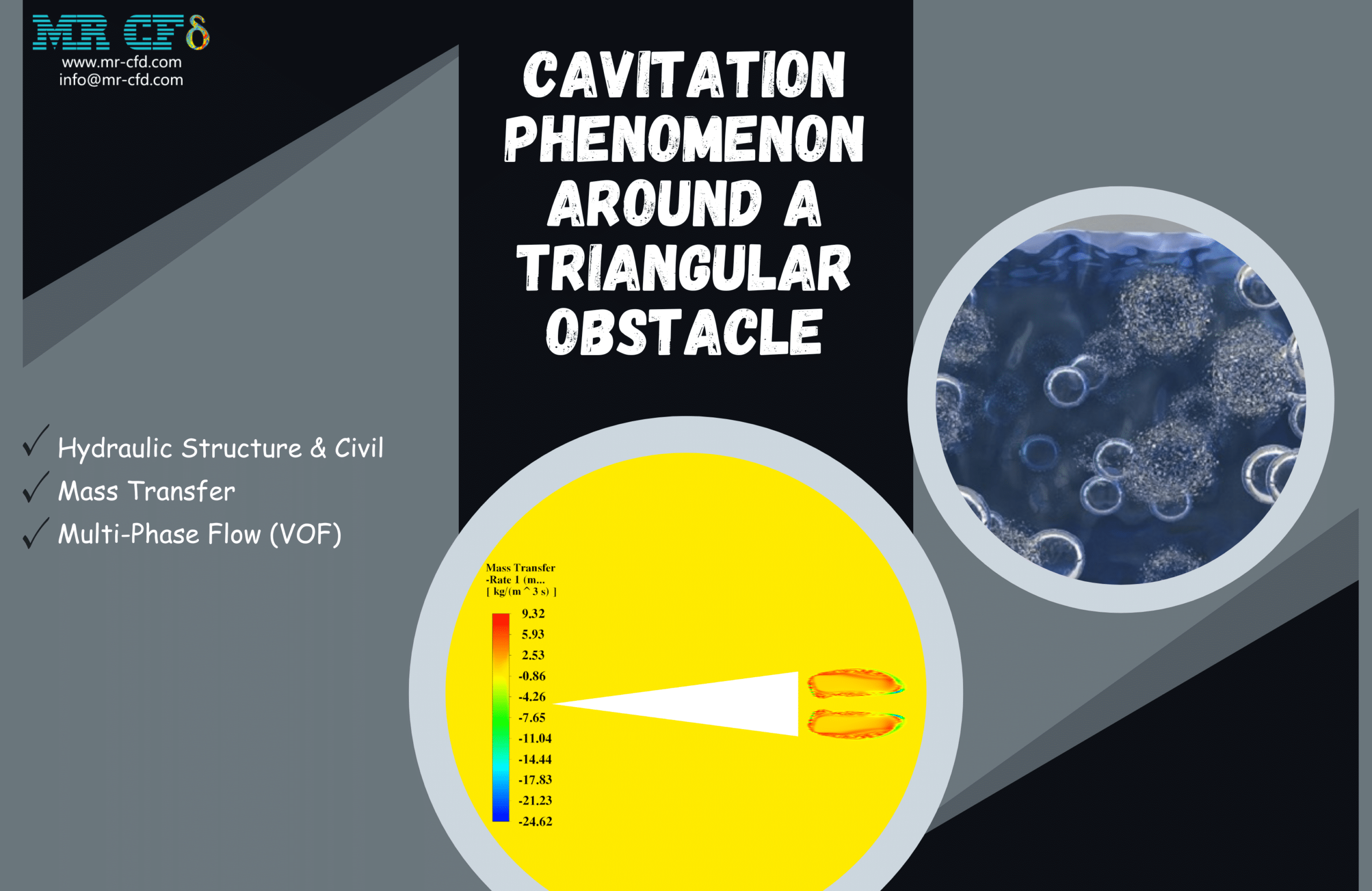
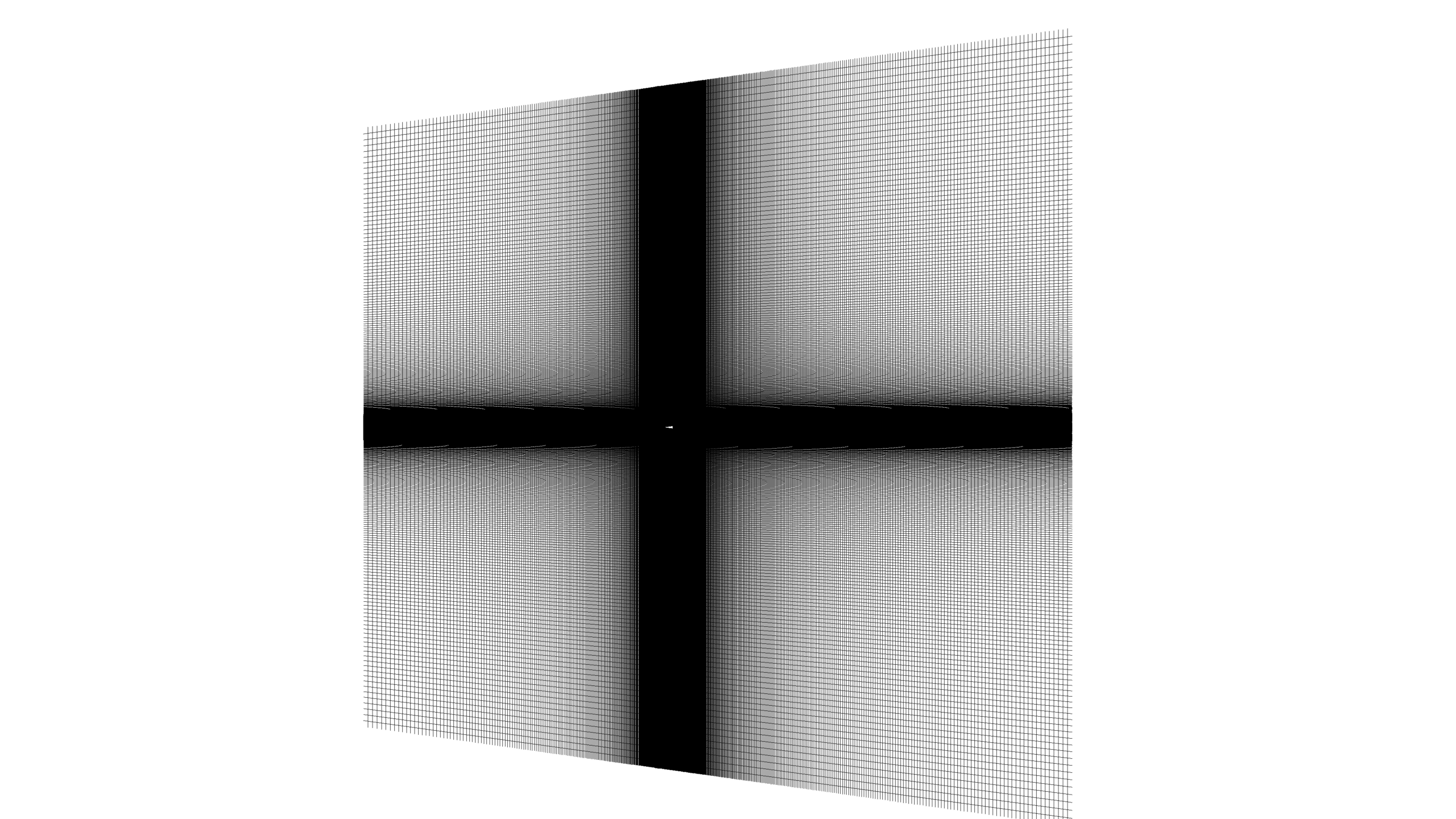


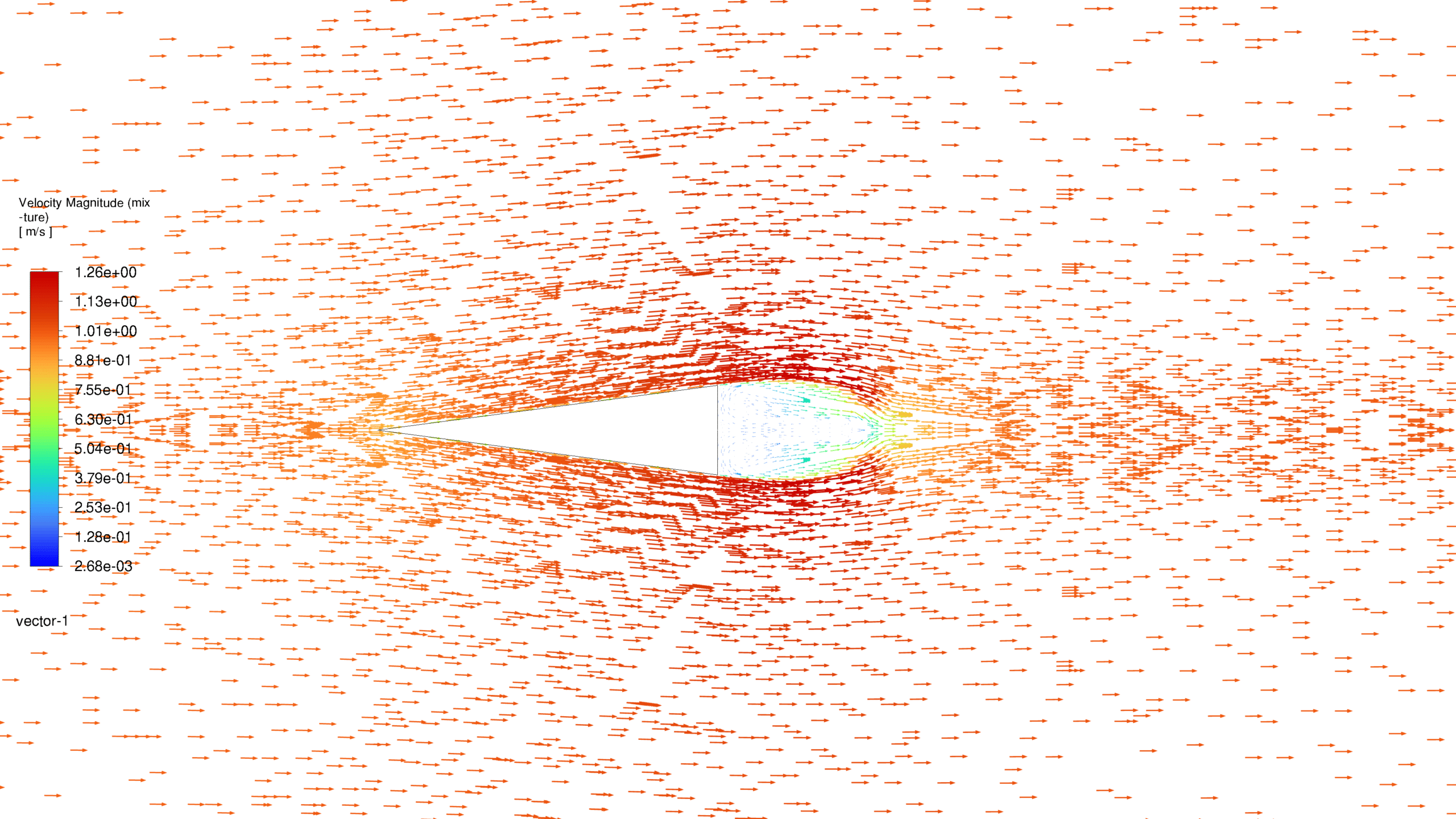
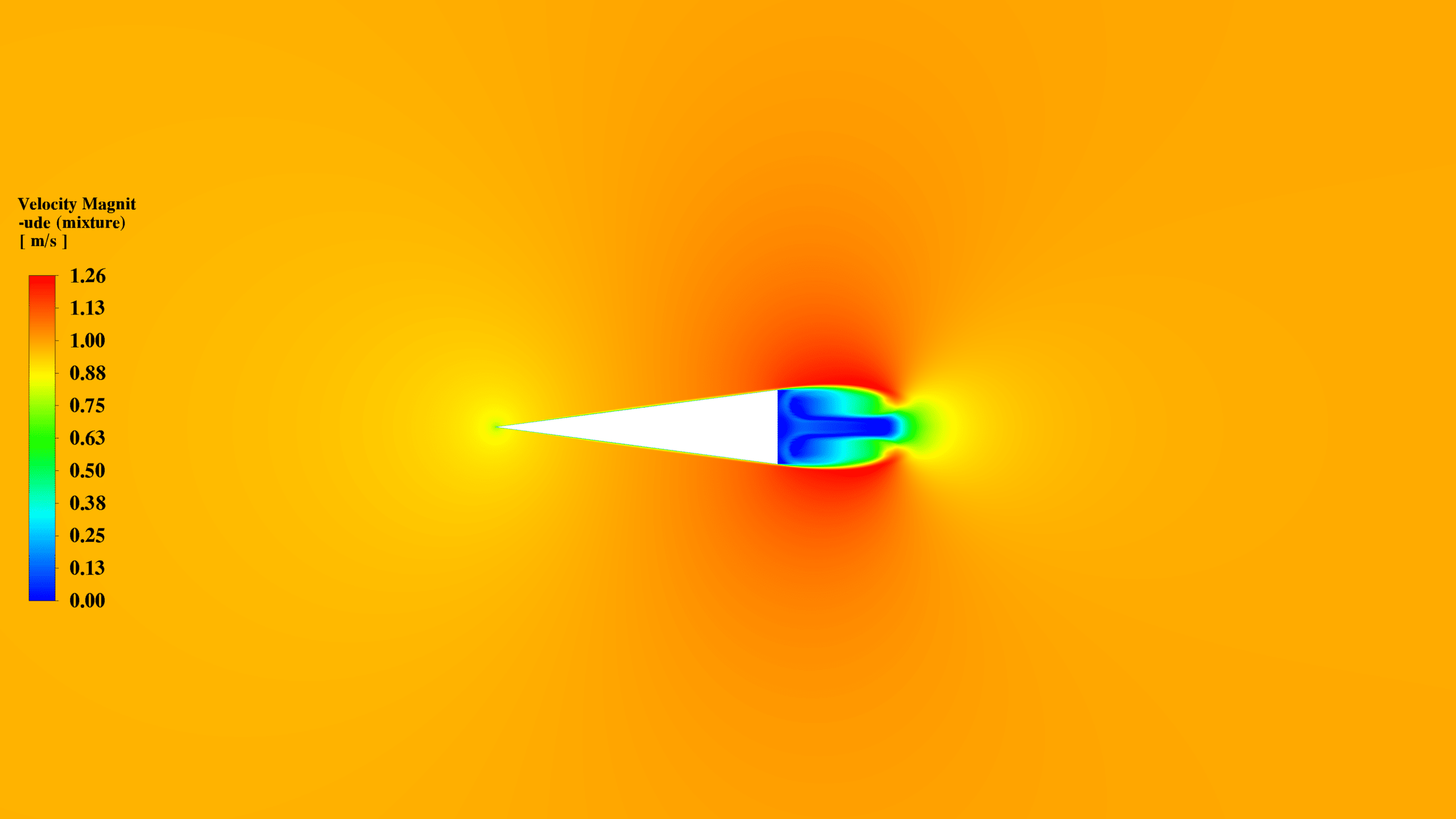
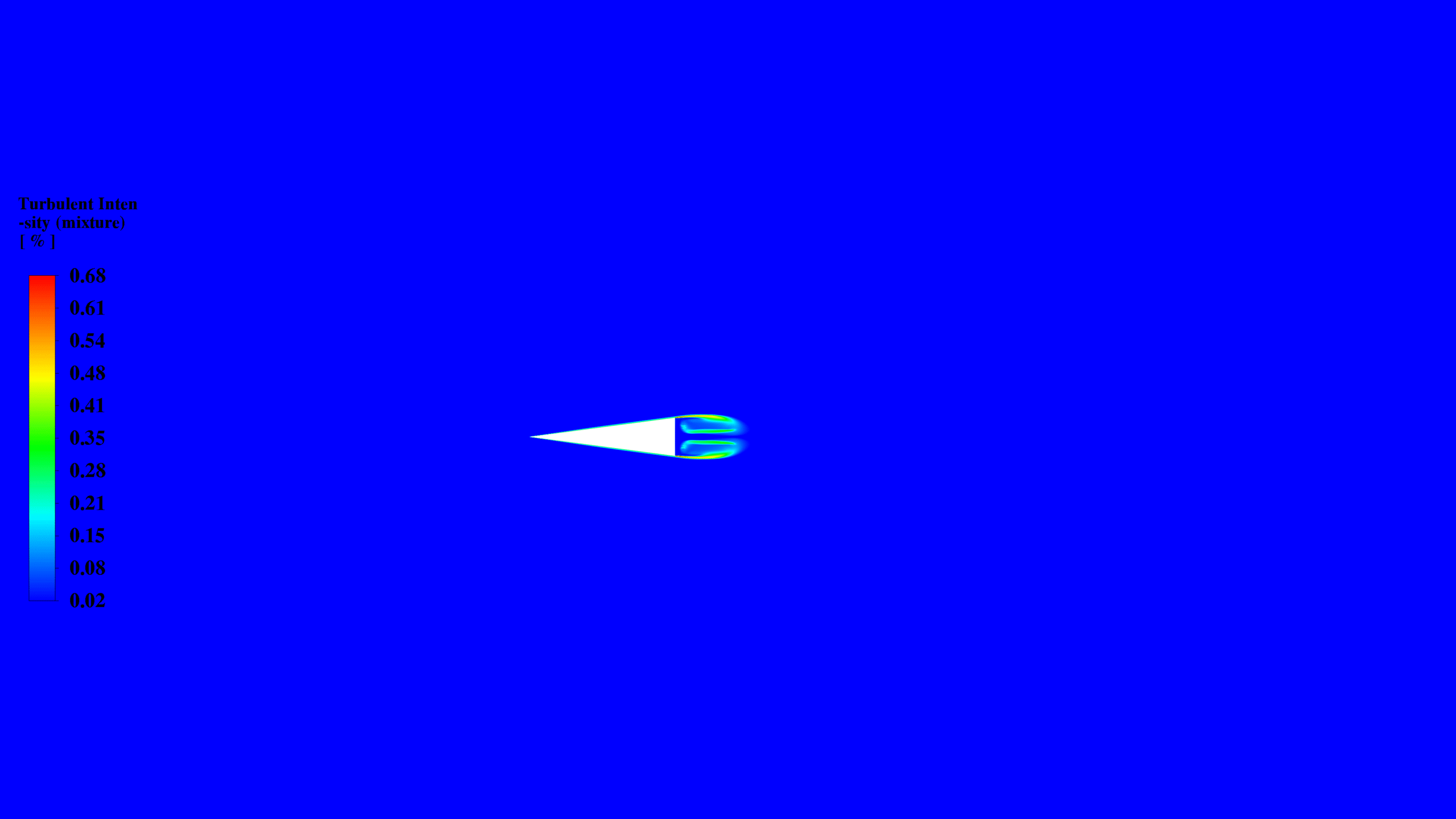

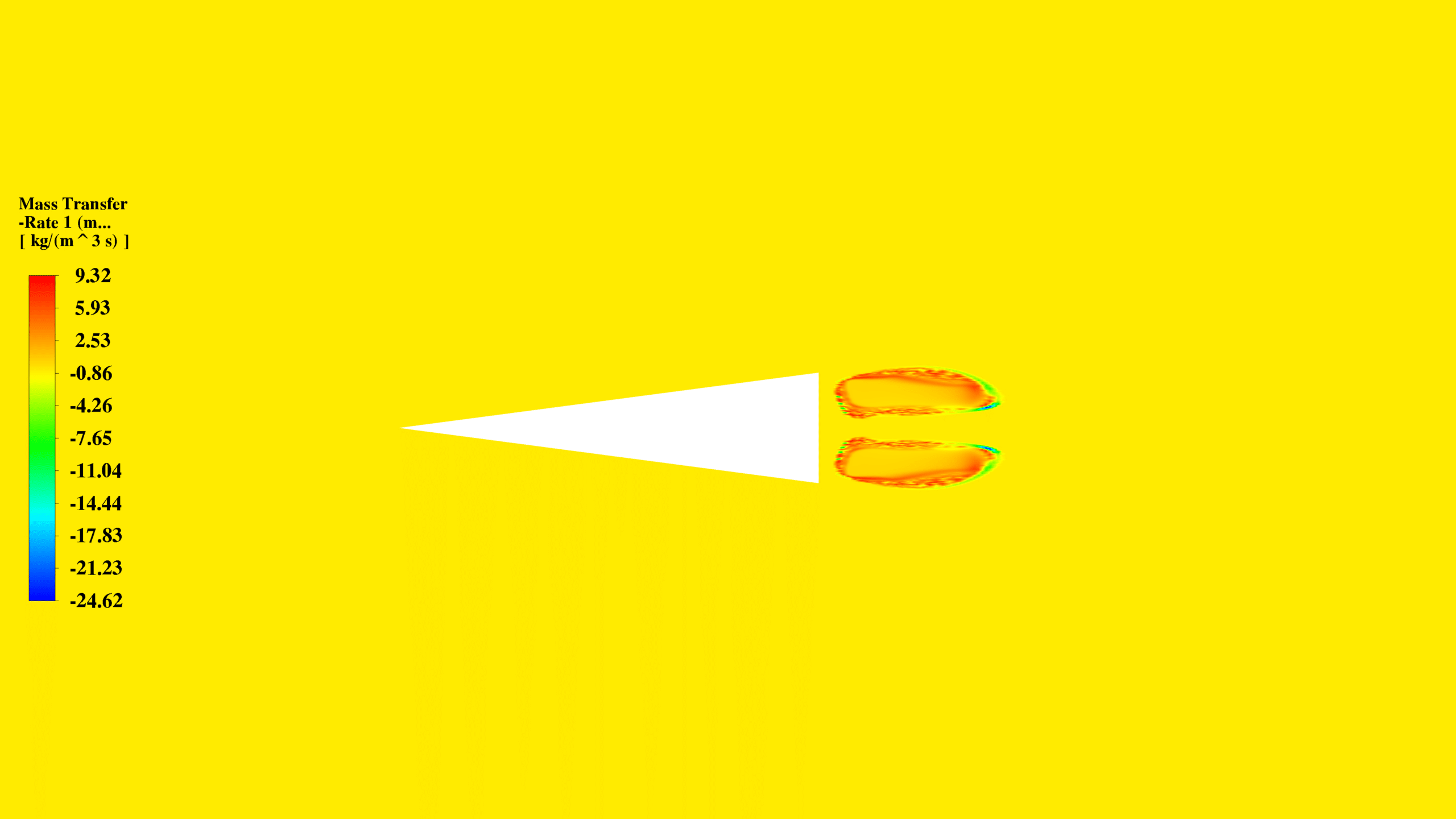
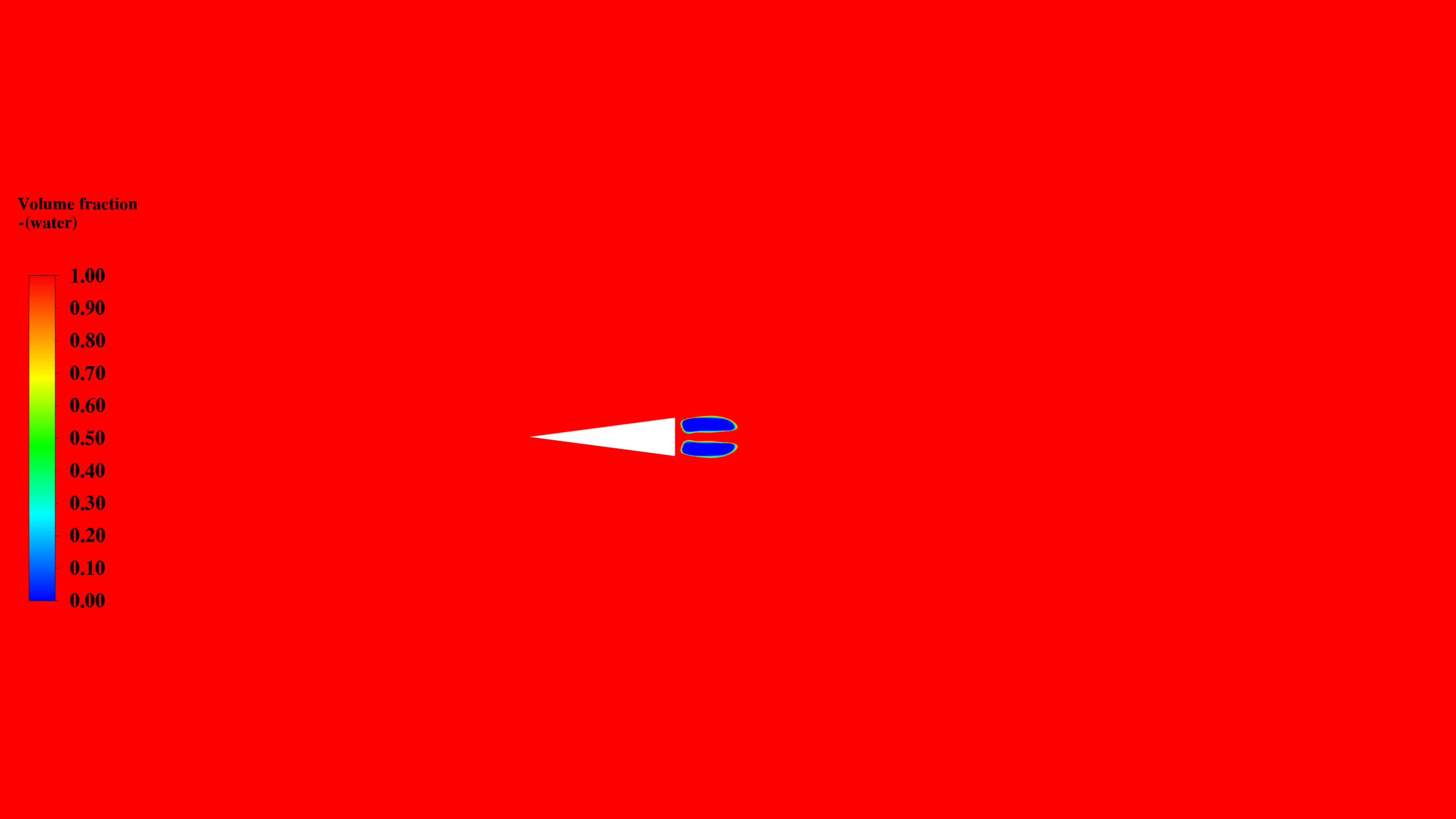
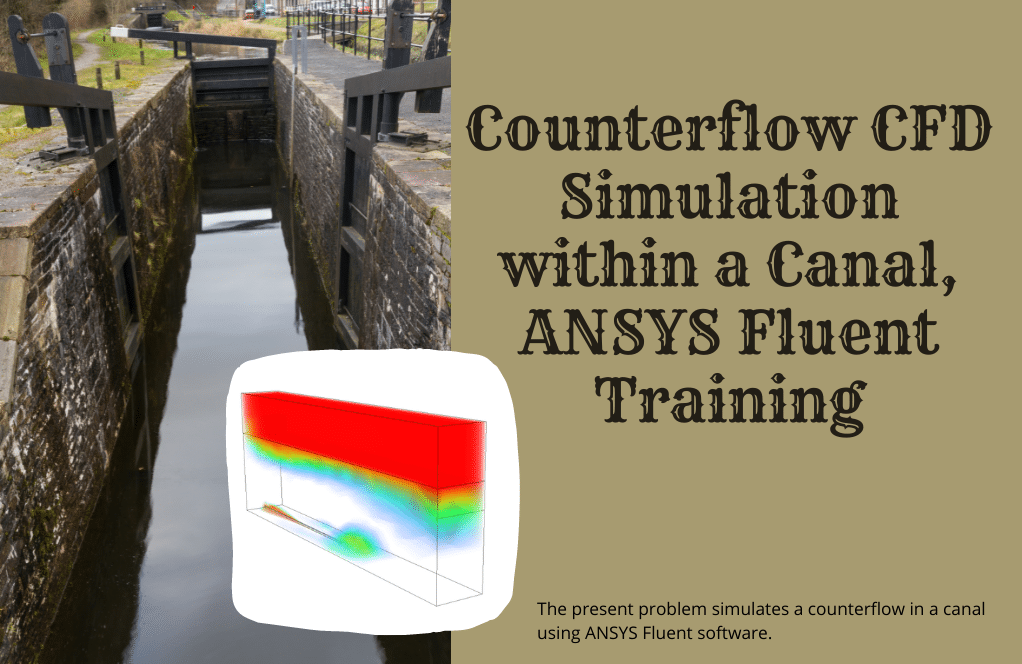
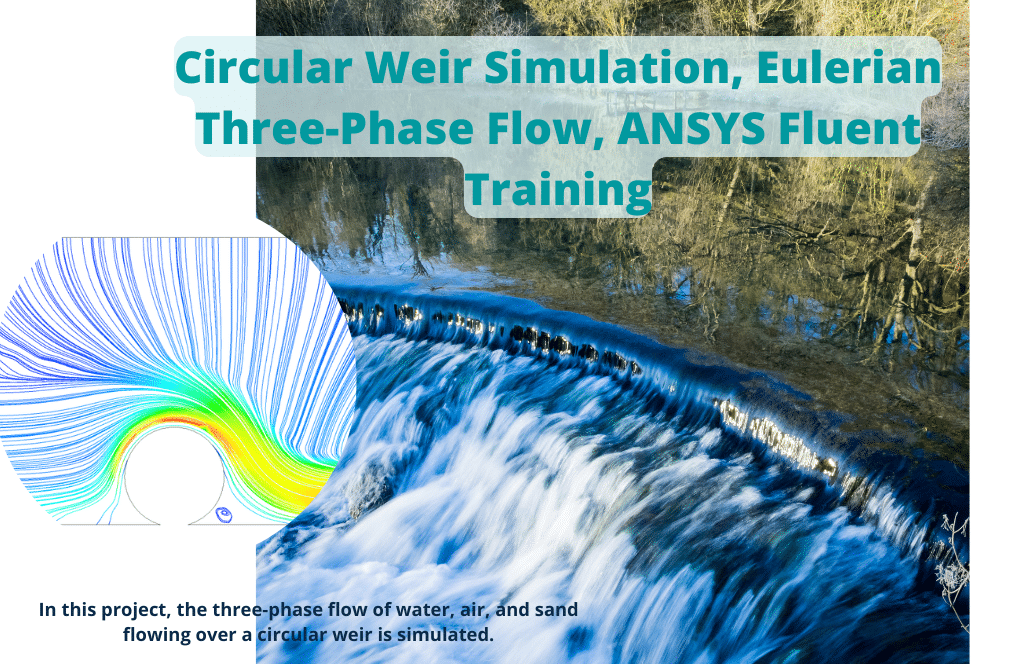
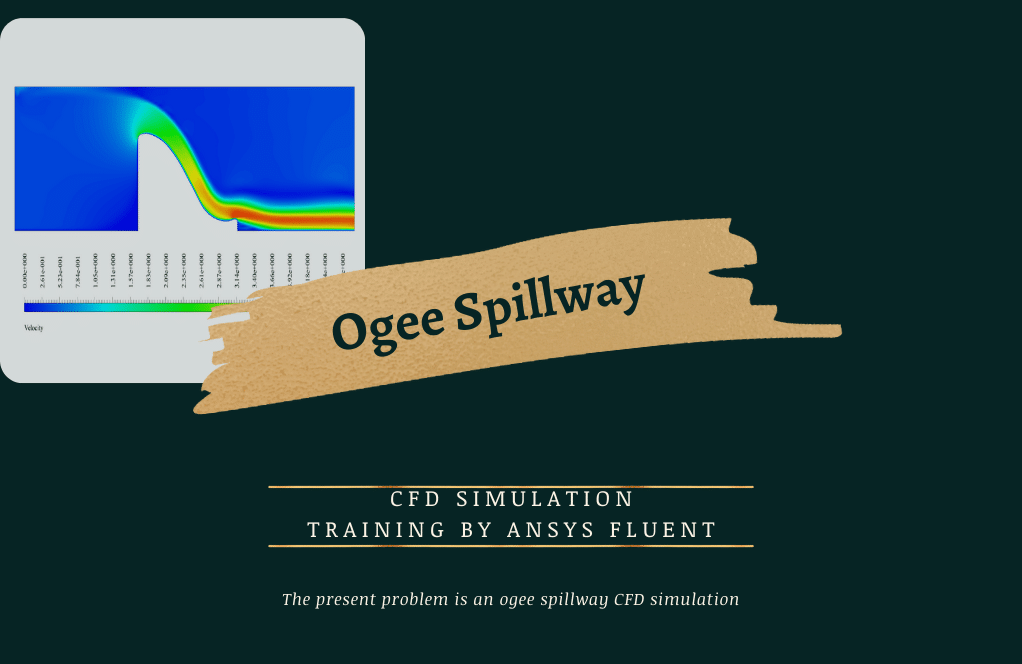
Reviews
There are no reviews yet.